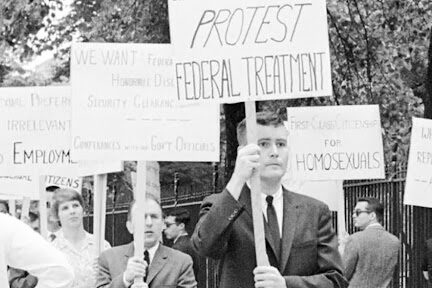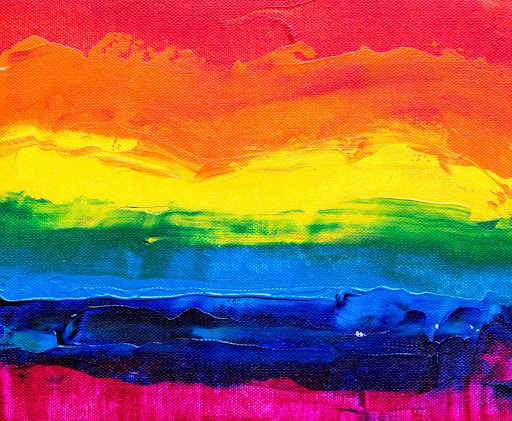Unlimited Sciences is excited to announce the launch of a new study centered around the experiences queer people have with ayahuasca. The study, which will be hosted at the Jungle Gayborhood, is directed by Executive Director & Chief Scientific Officer Matthew X. Lowe, Ph.D., and it’s the first of its kind.

Webster’s Dictionary defines “diagnosis” as the act of identifying a disease from its signs and symptoms. Therefore, the existence of a diagnosis implies a problem or illness. Homosexuality was included in the American Psychological Association’s (APA) first Diagnostic and Statistical Manual of Mental Disorders (DSM-I) as a “sexual deviation” alongside pedophilia, fetishism, and sexual sadism. But early psychologists were puzzled. Though many adopted the theories of Freud that homosexuality is a psychosexual development issue, talk therapy wasn’t effective in “treating” homosexuality, and behaviorists found no success through conditioning. Researchers and practitioners alike wondered “How do we cure this “problem”? Enter Timothy Leary. Timothy Leary touted LSD, peyote, and other psychedelics as a “cure-all’ ‘ for all problems, including homosexuality. Leary stated in a 1966 interview with Playboy that “LSD is a specific cure for homosexuality”. Leary and his colleague Richard Alpert, now known as counter-cultural figure Ram Dass, were essential figures in the brief post-war psychedelic research boom and proponents of the stigmas of the time.
You’ve probably heard of the Red Scare, but what about the Lavender Scare? Fueled by fear of communism and a need to act, the American government orchestrated the largest act of discrimination against gay and lesbian Americans in our history. In 1953, President Eisenhower declared gays and lesbians to be national threats to security and unfit for government service in an executive order that barred homosexuals from working in the federal government. It was believed that LGBTQIA+ people were “morally unfit” or “morally weak” and therefore susceptible to being used by communists. McCarthy and the State Department led this nationwide witch hunt, in which thousands of Americans lost their federal jobs if they were suspected of being gay. The Lavender Scare lasted into the 60s, and restrictions relaxed in the 70s, but Eisenhower’s executive order remained in effect in some form until 1995.
During the Lavender Scare, the counter-cultural movements of the 60s began, cycling current interests around anti-war, pro-drug, and the Gay Rights Movement that had begun to find traction. States began to decriminalize homosexuality and the Stonewall Riots of 1969 marked an important turning point in the Gay Rights Movement. However, this period is when the use of psychedelics within conversion therapy is at its peak.
Even before Leary’s bold statement that LSD can cure homosexuality, peer-reviewed articles had already begun to trickle in describing the use of LSD in gay conversion therapy. Alpert published a paper wherein he reports some success with a bisexual man, who begged him to treat him for his homosexuality. Ball and Armstrong composed a case report wherein they describe success using LSD to treat a pedophile and a supposedly bisexual man. They also note that “one transexualist”, “one transvestist”, “five male homosexuals”, and “one female homosexual” were also being treated with LSD, but they have not improved. It’s often noted within these studies that the subjects often “relapse into homosexuality”.
These studies weren’t isolated. They reflected what was accepted as treatment, even in larger commercial mental health facilities. In Canada, the New Westminster’s Hollywood Hospital treated several homosexual patients with LSD in an attempt to cure them. LGBTQIA+ individuals sought Hollywood Hospital for treatment due to the prevalent belief that their sexuality prevented them from having a nuclear family and general social acceptance. The Hollywood Hospital was a private institution that was popular among socialites and actors, and LSD was used in the treatment of various conditions at Hollywood Hospital.
The criminalization of psychedelics put a halt to interest in psychedelic research in 1970 when LSD became illegal in the United States. However, conversion therapy existed before psychedelics, and continued to exist after the fact–even today. In fact, a recent report titled “It’s Still Happening” the Trevor Project found that over 1,300 active practitioners use conversion therapy in the U.S. today.

In 1973, the APA voted to remove homosexuality from the DSM…kinda. Though the removal of homosexuality as an inherent psychiatric disorder was an important win for the LGBTQIA+ community, it remained in the DSM-II with the caveat that the individual who has issues with same-sex attraction may still be diagnosed and treated. Though the length and importance of the sections applicable to LGBTQIA+ people continued to shrink across editions, the community wasn’t truly de-pathologized by the APA until the publication of the DSM-V in 2013.
This update to the DSM-V followed the findings of a landmark 2009 APA task force assigned to determine the credibility of sexual orientation and gender orientation conversion therapies. Ultimately, they found no evidence of the success of conversion therapy, determining it to be unethical, ineffective, and harmful to LGBTQIA+ people. Testimony of individuals who endured conversion therapy repeatedly noted their decreased self-esteem, increased self-hate, and negative views about homosexuality, depression, shame, and suicidality.
Historically, psychedelics have been used as a tool of harm against LGBTQIA+ people within the therapeutic setting. Psychedelics were used to isolate a gay person, to instill fear or self-disgust, and to set that individual into a state of deep confusion regarding their sexual identity. LSD was used in conversion therapy to associate the positive feelings experienced on LSD with the opposite sex, and some forms of aversion therapy paired LSD with electro-shock therapy. How do we, the LGBTQIA+ community, turn the page on psychedelics with these grievances in mind?
Today we still have strong indications that psychedelics are capable of being powerful tools of healing. Research has indicated that psychedelics like LSD, psilocybin, and ayahuasca could be instrumental in improving depression, PTSD, substance use disorders, and other conditions.
Unlimited Sciences is excited to announce the launch of a new study centered around the experiences queer people have with ayahuasca. The study, which will be hosted at the Jungle Gayborhood, is directed by Executive Director & Chief Scientific Officer Matthew X. Lowe, Ph.D., and it’s the first of its kind. The study seeks to identify ayahuasca’s therapeutic potential and risks for the LGBTQIA+ community.
“Psychedelics in the queer community have a complicated history,” says Matthew X. Lowe, PhD in a live interview with Psychedelics Today on LGBTQ+ psychedelic research, “There are almost no quantitative studies exploring the intersectionality of psychedelics with queer experiences and perspectives.” To date, few investigations have examined the potential of psychedelics to treat the disproportionate rates of mental health conditions in the LGBTQIA+ community, where individuals are more likely to experience depression, anxiety, and substance misuse, as well as trauma and adverse childhood experiences, compared with the general population. “There are very few safe spaces in the psychedelic community, specifically, to undergo these types of intense experiences and healing journeys that allow for this kind of community-based healing to take place,” continues Dr. Lowe. It is important and timely to raise awareness about the potential impacts of these substances in the queer community. To donate to this important research, please click here.
No comment yet.
Join our email list and get immediate access to part one of our psilocybin guide. You’ll also get the latest in how we’re bridging the gap between science and soul: psychedelic research updates, real-world findings, community-driven education, personal stories and expert insights on natural medicine.
Advancing Real-World Psychedelic Research and Science-Backed Education
Unlimited Sciences is provided with a nonprofit status by fiscal sponsorship through Realm of Caring Foundation.
Federal EIN: 46-3371348.
© 2025 Unlimited Sciences. All Rights Reserved.
Designed by Gloss